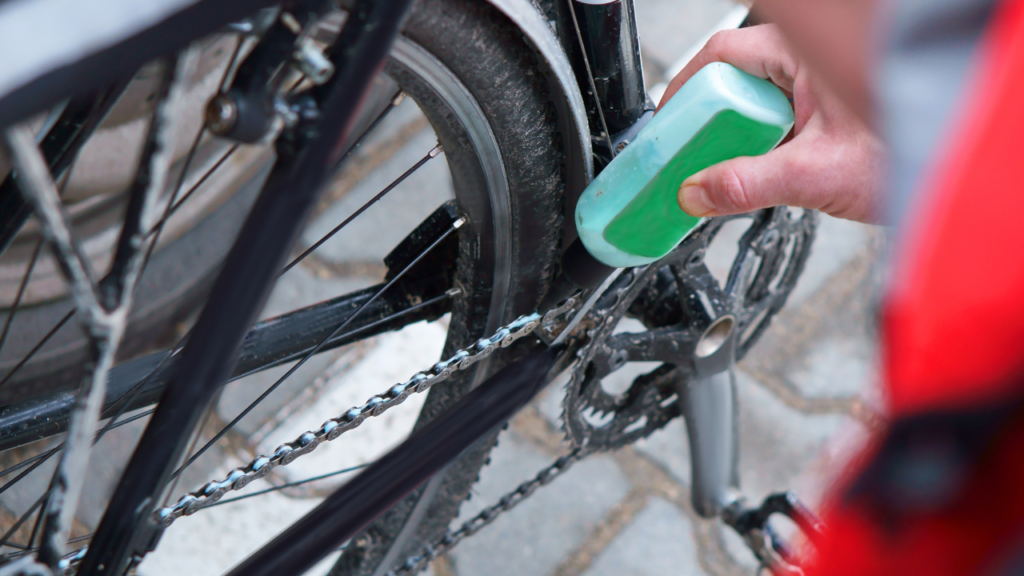Getting your bike out for a ride only to find that the chain keeps slipping can be frustrating. There’s nothing worse than being unable to maintain momentum or losing control altogether. But before you let this minor inconvenience ruin your day, take heart in knowing that fixing a slipping bike chain is easier than you might think! In this blog post, we’ll walk you through some simple steps to get that chain back in working order and help you get back on the road with ease. So let’s dive in and explore how to fix a slipping bike chain!
Causes of a Slipping Bike Chain
When a bike chain slips, it can be caused by a number of different things. First, the chain may be too loose. This can be adjusted by tightening the bolts that hold the rear derailleur in place. Additionally, the chain may be worn and need to be replaced. Finally, if the bike is ridden in dirty or muddy conditions, the chain may need to be cleaned or lubricated.
How to Fix a Slipping Bike Chain?

A slipping bike chain can be a frustrating and potentially dangerous problem while riding. Fortunately, fixing a slipping bike chain is relatively simple and can be done with a few basic tools. Here are the steps to follow:
- Stop Riding and Inspect the Chain: If your bike chain is slipping while riding, stop immediately and inspect the chain for any obvious issues such as rust, damage, or wear.
- Shift the Chain to the Smallest Gear: Shift the chain to the smallest gear on the rear cassette and the smallest chainring on the front derailleur.
- Loosen the Rear Wheel: Loosen the quick-release lever on the rear wheel or use a wrench to loosen the bolts that hold the rear wheel in place.
- Adjust the Rear Wheel: Adjust the rear wheel by moving it slightly forward or backward until the chain is properly tensioned. The chain should be tight enough so that it does not slip, but not so tight that it causes unnecessary friction.
- Align the Rear Wheel: Ensure that the rear wheel is properly aligned with the frame. Use a ruler or straight edge to check that the rear wheel is aligned with the front wheel.
- Tighten the Rear Wheel: Once the rear wheel is properly aligned and tensioned, tighten the quick-release lever or bolts to secure the rear wheel in place.
- Test the Chain Tension: Shift through the gears and check that the chain is properly tensioned and does not slip. Make any necessary adjustments to the rear wheel tension.
- Lubricate the Chain: If the chain was slipping due to lack of lubrication, apply lubricant to the chain according to the manufacturer’s instructions.
- Test Ride the Bike: Take the bike for a test ride to ensure that the chain is no longer slipping and that the bike is functioning properly.
It is important to regularly maintain and inspect your bike chain to prevent it from slipping in the first place. A well-lubricated and properly tensioned chain will help prevent slipping and improve overall bike performance. If you are unsure about any aspect of chain maintenance or repair, it is always recommended to consult with a professional bike mechanic.
Don’t Over-Lubricate your Bike Chain

Overlubricating a bike chain can actually contribute to a slipping bike chain. When a bike chain is over-lubricated, excess lubricant can attract and accumulate dirt and debris, which can cause the chain to become gummy and sticky. This can create excess friction between the chain and the cassette or chainring, leading to a slipping chain.
Over-lubrication can also cause the lubricant to migrate onto other parts of the bike, such as the rims or brake pads, which can affect braking performance and cause safety concerns.
To avoid over-lubricating your bike chain, use a moderate amount of lubricant and wipe off any excess with a clean rag. It’s also important to choose a lubricant that is appropriate for your riding conditions and the type of chain you have. For example, wet lubricants are better for wet and muddy conditions, while dry lubricants are better for dry and dusty conditions.
Regularly cleaning and maintaining your bike chain can also help prevent over-lubrication and ensure optimal performance while riding.
Tips and Maintenance for preventing a slipping bike chain
Your bike chain is one of the most important parts of your bicycle, and keeping it in good working order is essential to keeping your bike running smoothly. A slipping bike chain can be a major annoyance, and can even cause you to lose control of your bike if it happens while you’re riding.
There are a few things you can do to prevent your bike chain from slipping. First, make sure that your chain is properly lubricated. A dry or rusty chain is more likely to slip than a well-lubricated one. You should also clean your chain regularly to remove any dirt or debris that could be causing it to slip.
If your chain does start to slip, don’t panic! There are a few easy ways to fix it. First, try shifting into a lower gear. This will give your chain more tension and help keep it from slipping. If that doesn’t work, you can try pedaling backward for a few rotations. This will loosen the chain and help it engage properly again.
With just a little bit of care and maintenance, you can keep your bike chain from slipping and keep your ride smooth and enjoyable!
Faq
A bike chain can slip due to several reasons, including an improperly tensioned chain, a worn chain or cassette, a loose chainring, or a lack of lubrication.
If you feel a sudden loss of power while pedaling, or hear a clicking or grinding noise, it may indicate that your bike chain is slipping. You can also visually inspect the chain for signs of wear or damage.
Yes, fixing a slipping bike chain is a relatively simple process that can be done with a few basic tools. See the steps outlined in the previous answer for guidance.
Regular maintenance and care, such as cleaning and lubricating your chain, can help prevent it from slipping. It is also important to ensure proper chain tension and replace worn components as needed.
Conclusion
Fixing a slipping bike chain may seem daunting at first, but with the right tools and knowledge, it is actually quite simple. A little bit of time spent tightening your bike’s components can save you from further annoying problems down the line. Now that you know how to fix a slipping bike chain, make sure to add this task to your regular routine! Properly maintained bikes are much safer and more enjoyable to ride.






